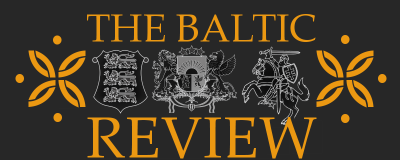Biodiversity – the variety of Life on Earth – makes our planet habitable and beautiful. We depend on it for the food, energy, raw materials, air and water that make life possible and drive our economy
The EU is committed to the protection of biodiversity, and to halting biodiversity loss within the EU by 2020.
Over the last 25 years the EU has built up a vast network of 26.000 protected areas in all the Member States and an area of more than 750.000 km2, which is 18% of the EU’s land area. Known as Natura 2000, it is the largest network of protected areas in the world, and a testament to the importance that EU citizens attach to biodiversity.
The legal basis for Natura 2000 comes from the Birds Directive and the Habitats Directive, which form the backbone of the EU’s internal biodiversity policy. But protected natural areas cannot thrive in isolation: if we want to conserve Europe’s natural capital, then agriculture, energy and transport policies must be sustainable too.
Latvia: Expert discussion on the restorability of cutaway peatlands
At the beginning of April,within “NAT-PROGRAMME” project events, Latvian mire experts gathered at Kemeri National Park to share opinions on cutaway peatlands, their interpretation through the scope of EU-importance habitat types and their future in terms of ecosystem restoration.
Cutaway peatlands are severely deteriorated wetland ecosystems, however, most of them still have a regeneration capability. Cutaway peatlands and their restorability is so far a little discussed topic in Latvia. In Latvia, there are not many examples of intentional restoration of cutaway peatlands, but good examples of successful self-regeneration can be found. Up to now, most projects concerning to restore mires, paid attention to water table restoration in raised bogs affected by drainage.
Can the cutaway peatlands be valuable habitats? Do they have a regeneration capacity? When are they still restorable and when not? These and many other questions arose in the discussion when visiting several cutaway peatland areas in Kemeri National Park. The sites visited and discussed included areas which are damaged by peat extraction, drainage and numerous fires,and mires with alkaline sulphurous spring discharges.
Seen examples suggested that the peat extraction impacts might be highly variable – from small-scale hand-made old peat cuttings to large ponds created by machinery in the former peat quarries and peat milling fields dominated by bare peat. Not only the impacts, but also the restoration or self-restoration success represent a large variety of outcomes.
Many of the old peat cutting areas have well recovered, the peat cutting trenches are overgrown with Sphagnum and other bog plants indicating successful regeneration. Some of the peat quarries are cut down to the mineral ground and filled up with alkaline water, thus being unsuitable for regeneration of bog vegetation. However, the open water areas and mosaics of reed beds may be valuable habitats for birds and invertebrates, e.g. dragonflies. Some parts of the bogs are seriously damaged by drainage and peat extraction, being unable for recovery, unless a suitable water table is restored. The mire expert group visited the former peat milling area in the Large Kemeri Mire, a good example of successful restoration, which conviced that also milling fields can be restored, thus allowing to interpret them as a potentially valuable habitat.
Restoration of a cutaway peatland is not always an easy task and might take a long time, but it is not impossible.
The experts concluded that in terms of restoration the cutaway peatlands it is not only important to identify them as habitat types of EU-importance, but to widen the perspective by taking into account their other values and functions, e.g. refugees of mire species and their role in carbon sequestration.
The fruitful expert discussion has brought valuable ideas and views from different perspectives.
The discussion results will be used in development of the restoration guidelines for mire habitats and integrated into the training of experts in habitat mapping.
Why such expert meetings are important?
LIFE+ funded „NAT-PROGRAMME” project team is working to structure and improve management actions for specially protected biotope types. Project outcome include developing and publishing two strategic documents – a National Conservation and Management Programme that will specify nature conservation priorities for each Natura 2000 territory in Latvia and Biotope Management guidelines, elaborated by a team of experts.




























Comments